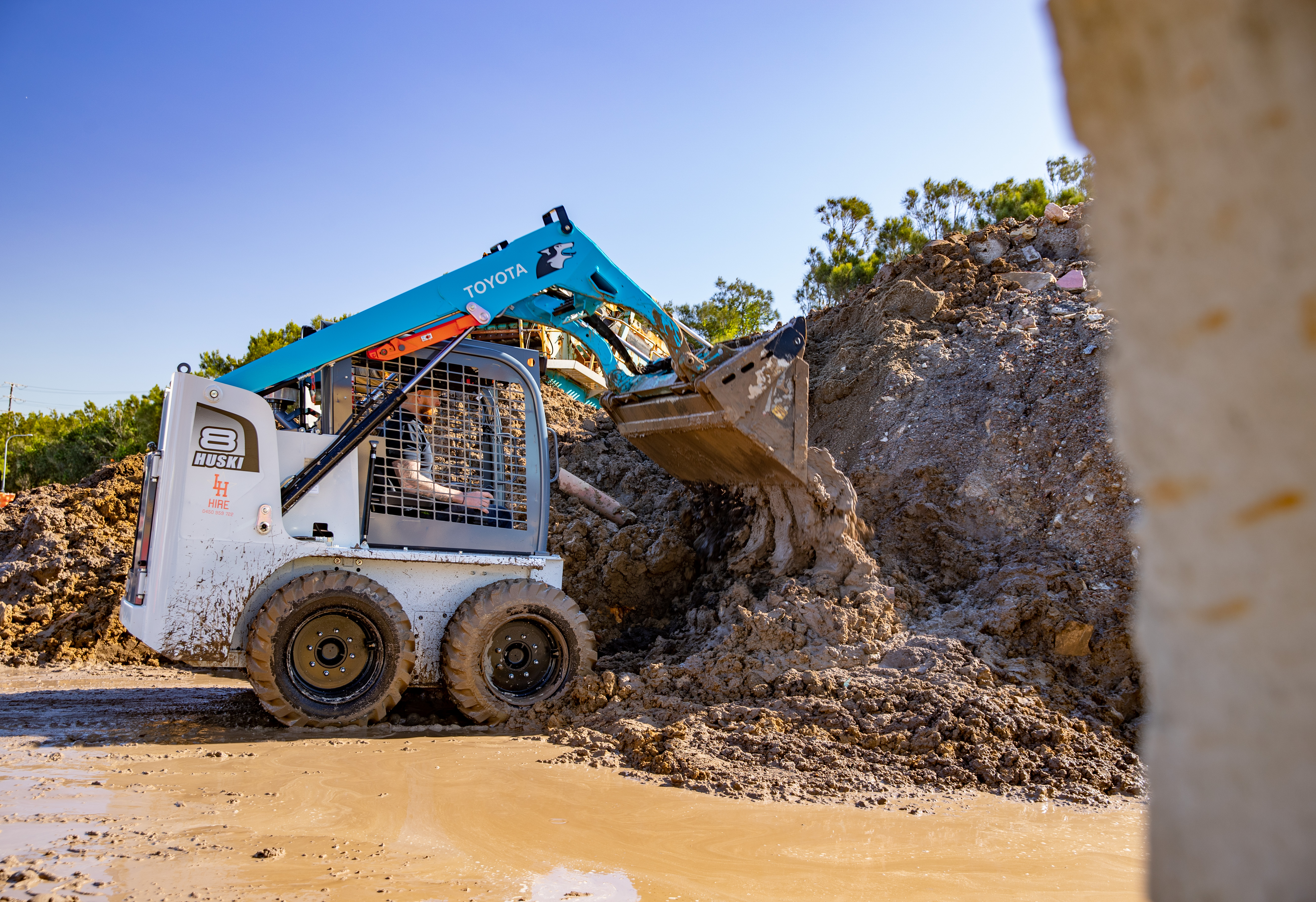When it comes to construction, landscaping, or agricultural work, a skid steer loader is one of the most versatile pieces of equipment you can have. From digging and grading to lifting and loading, skid steer loaders can handle a wide range of tasks, making them an essential tool for many industries. However, with so many options on the market, choosing the right skid steer loader can feel overwhelming.
At Huski, we offer a comprehensive range of skid steer loaders designed to meet your specific needs. Here’s a guide to help you make the right choice and find the perfect skid steer loader for your next project.
The first step in choosing the right skid steer loader is to assess the type of work you’ll be doing. Different jobs require different capacities, and selecting a machine with the appropriate power and size will make your operations more efficient.
Understanding the scope of your work will help you determine the right balance of power, size, and manoeuvrability needed in a skid steer loader.
Operating capacity refers to the maximum weight a skid steer loader can lift and safely handle. Choosing a machine with the right operating capacity is essential for ensuring productivity and safety on the job site. As a general rule, a skid steer loader's operating capacity should be about half the weight of the heaviest load you plan to lift.
At Huski, we offer a variety of models with different operating capacities, allowing you to select the right machine for your project’s needs.
Skid steer loaders come in two main types of boom designs: radial and vertical. The type of boom design you choose depends on the nature of your work:
Radial Lift: This design allows for optimal grading, prying and below grade digging. The lift arm hinge point at the end of the lift arm and when raised, strikes an arc with a radius measured from the bucket tip to the hinge point.
Vertical Lift: This design allows for optimal material handling. The bucket or attachment maintains the same distance from the machine making this ideal for truck loading of material or pallets and allows for better stability.
Consider the type of tasks you’ll be performing most often when deciding between a radial or vertical lift path.

One of the greatest advantages of a skid steer loader is its versatility, thanks to the wide range of attachments available. From buckets and augers to trenchers and hydraulic hammers, skid steer loaders can be equipped with attachments that significantly expand their functionality.
When choosing a skid steer loader, ensure that it is compatible with the attachments you plan to use.
At Huski, we offer a wide selection of attachments designed to enhance the performance of our skid steer loaders, ensuring you can tackle any task with ease.
Maneuverability is a key factor when working in tight or confined spaces. Smaller skid steer loaders tend to be more agile, allowing for greater versatility in smaller job sites. However, if you’re working in wide-open areas or need to transport heavy materials over long distances, a larger machine with more stability may be a better option.
Most modern skid steer loaders come with advanced control systems that improve operator comfort and precision. Some models offer joystick controls, which allow for smoother and more intuitive operation. When choosing your loader, consider the level of control you need to operate effectively and efficiently.
While performance is essential, operator comfort should not be overlooked. A comfortable cab can make a big difference in productivity, especially if you’ll be operating the machine for long hours. Features like adjustable seating, climate control, and clear visibility can enhance the operator’s experience and reduce fatigue.
At Huski, our skid steer loaders are designed with operator comfort in mind. With spacious cabs, ergonomic controls, and excellent visibility, our machines ensure that operators can work comfortably and efficiently.
When investing in a skid steer loader, it's important to think beyond the initial purchase price. Consider long-term costs such as fuel efficiency, maintenance, and the availability of spare parts. A reliable machine with low maintenance needs will save you time and money in the long run.
At Huski, we pride ourselves on offering durable, high-quality skid steer loaders that require minimal maintenance, ensuring you get the best value over the life of the machine.
Choosing the right skid steer loader is essential for ensuring productivity, safety, and efficiency on the job site. At Huski, we offer a range of top-performing skid steer loaders designed to meet the needs of various industries. Whether you're working on a large construction project or a smaller landscaping task, we have the perfect machine for you.
Visit our website at Huski Construction Equipment to explore our full range of skid steer loaders and find the model that suits your needs. Our team is here to help you make the right choice and ensure you get the best equipment for your project.